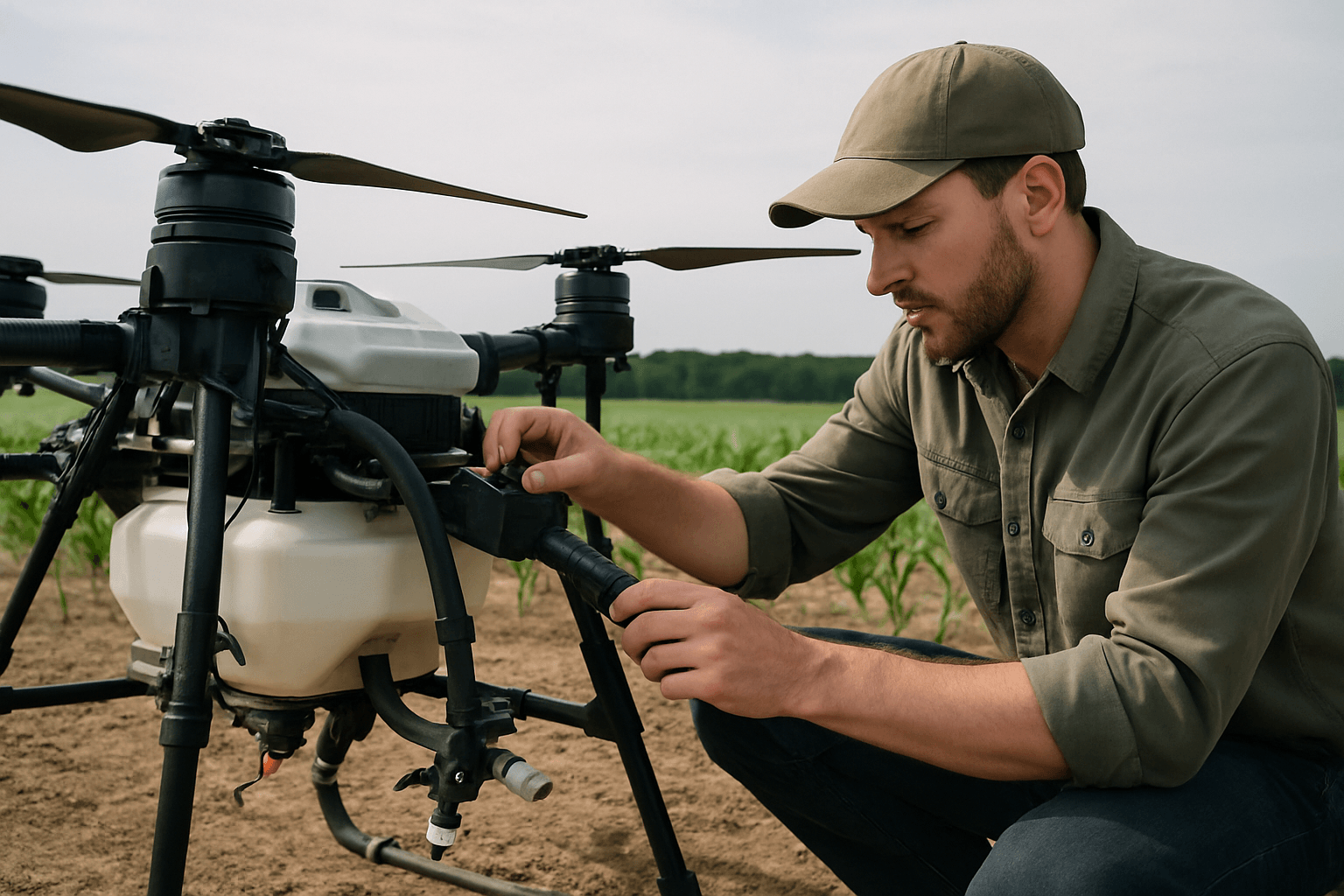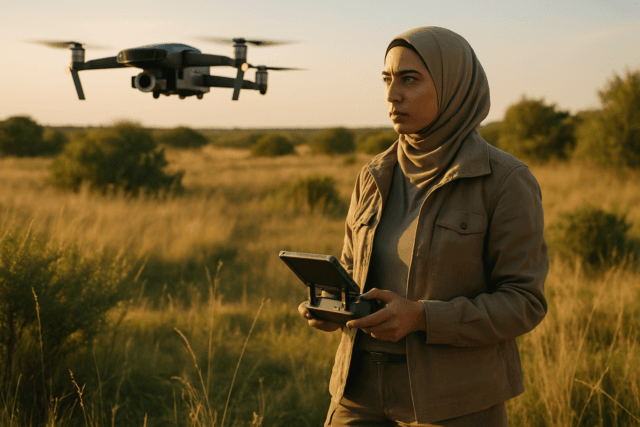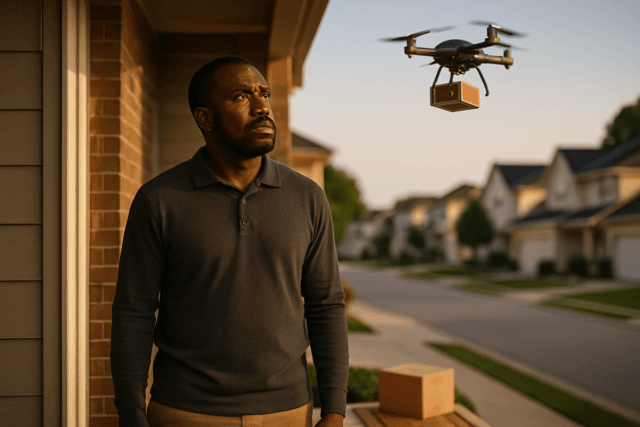The application of variable rate fertilizer with drones represents a significant advancement in precision agriculture, offering numerous benefits in efficiency, cost savings, and environmental sustainability. This technology leverages unmanned aerial vehicles (UAVs) to provide targeted nutrient management, moving beyond traditional uniform application methods to address the specific needs of different areas within a field.
The Concept of Variable Rate Application (VRA)
Variable Rate Application (VRA) is a core principle of precision agriculture that involves tailoring the application of agricultural inputs, such as fertilizers, based on the specific requirements of different zones within a field. Unlike traditional “blanket” applications that treat an entire field uniformly, VRA aims to deliver precise amounts of nutrients where and when they are needed. This targeted approach is crucial because factors like soil type, weather patterns, and crop variety can lead to significant variations in plant growth and nutrient uptake across a single field.
The goal of VRA is to standardize growth differences within a field, ensuring both high yield and uniform quality. For instance, in wheat fields, VRA fertilization can regulate growth heterogeneity to improve and regulate protein content. By preventing over-fertilization, VRA can avoid issues like root burn and stunted growth in the short term, and soil acidification in the long term. It also significantly reduces nutrient runoff, protecting waterways and streams, and minimizes overall fertilizer use, leading to substantial cost savings.
The Role of Drones in Precision Fertilization
Drones have emerged as indispensable tools for implementing VRA of fertilizers due to their unique capabilities in data collection and precise application.
Data Acquisition and Prescription Map Generation
The initial and critical step in drone-based variable rate fertilization is accurate data collection. Drones equipped with advanced sensors, such as multispectral and LiDAR cameras, capture high-resolution imagery and data that provide detailed insights into crop health, soil conditions, and other parameters.
- Multispectral Imaging: Multispectral cameras, like the MicaSense Altum or Parrot Sequoia+, can “see the invisible” by capturing light absorption and reflectance across different spectra. This data is used to generate various vegetation indices, such as the Normalized Difference Vegetation Index (NDVI) and Green Area Index (GAI). High NDVI values typically indicate a high concentration of biomass, suggesting areas that might require more nutrients.
- LiDAR and 3D Mapping: LiDAR (Light Detection and Ranging) systems mounted on drones revolutionize 3D mapping in agriculture. This technology provides highly accurate elevation maps and detailed information about the crop canopy, which is crucial for precise application and identifying areas with varying growth patterns.
- Real-time Data and AI Integration: Drones can collect real-time data on plant stress, water deficiencies, and pest infestations. This data is processed and analyzed using big data and artificial intelligence (AI) to identify patterns and generate “prescription maps.” These maps guide the drone, specifying the variable rates at which fertilizers should be applied across different parts of the field.
Once the data is collected and analyzed, specialized software like Pix4Dfields converts this information into georeferenced zonation maps or prescription maps. These maps indicate areas with different nutrient requirements, allowing for tailored application. For instance, areas with lower GAI values (indicating less green biomass) might be prescribed higher nitrogen rates.
Precision Application Systems
With the prescription map in hand, the agricultural drone, often referred to as an “agricultural plant protection drone” or “spraying drone,” then precisely applies the fertilizer.
- Automated Spraying Systems: Fertilizer spraying drones are designed to spray fertilizers with accurate and even distribution using GPS navigation and automated spraying systems. These drones fly in predefined flight paths, ensuring the entire field is treated efficiently, even in uneven terrains.
- Variable Rate Technology (VRT) Integration: VRT-equipped drones can adjust the application rates in real-time based on the data from sensors and imaging technologies. If a drone detects a nutrient-deficient area, it can increase the fertilizer application rate in that specific zone, and conversely, reduce it in areas with sufficient nutrient levels, preventing over-application.
- Nozzle Control: Advanced nozzles on these drones regulate spraying according to specific needs, further enhancing precision and decreasing waste. Granular fertilizer spreaders on drones can be pneumatic or centrifugal disc types, with variable rate control systems adjusting the discharge rate based on the prescription map.
Benefits of Drone-Based Variable Rate Fertilization
The adoption of drones for variable rate fertilizer application offers a multitude of advantages for modern agriculture:
- Improved Efficiency: Drones can cover large areas quickly, significantly reducing the time and labor required for fertilizer application compared to traditional methods. This increased efficiency ensures timely nutrient application, which is crucial for crop health and yield.
- Cost Savings: By optimizing fertilizer use and reducing waste, drones lead to substantial cost savings for farmers. Studies have shown that drone technology can increase the precision of fertilizer application by up to 40%, directly reducing wastage. Furthermore, it cuts down on fuel expenses for ground sprayers and the need for manual labor.
- Reduced Environmental Impact: Precision application minimizes over-spraying and chemical runoff, significantly reducing the risk of water and soil pollution. This targeted approach promotes sustainable nutrient management and contributes to a more environmentally friendly farming practice. Drones also help reduce soil compaction and erosion as nutrients are distributed by air.
- Enhanced Crop Health and Yield: Real-time monitoring of crop health enables early detection of nutrient deficiencies and allows for timely intervention, leading to healthier plants, increased yields, and improved crop quality. By providing tailored nutrition for each crop, drones ensure that each plant receives exactly the nutrients it needs, avoiding waste and maximizing yield potential.
- Accessibility and Safety: Drones can access difficult or remote terrain that is challenging for traditional machinery, making it easier to apply fertilizer to hard-to-reach areas. They can also operate in wet conditions where heavy machinery might get stuck. Additionally, using drones reduces human exposure to potentially dangerous chemicals, improving operator safety.
- Data-Driven Decision Making: Drones provide detailed data on soil and crop conditions, including pH levels, soil types, and chemical content. This comprehensive information allows farmers to make informed, data-driven decisions for optimal land management and resource allocation.
Challenges and Future Outlook
Despite the significant advantages, the widespread adoption of drone-based variable rate fertilization still faces certain challenges. These include the initial investment cost of drone technology, which can be substantial, although prices are decreasing as the technology becomes more widespread. Technical expertise and training are also required for operating drones effectively. Furthermore, evolving regulations regarding drone use in agriculture and potential challenges with battery life, flight time, and connectivity in remote areas need to be addressed.
The future of drone technology in fertilizer application appears promising. By 2025, it is estimated that 65% of the agriculture drone market will be associated with fertilizers and compost manufacturing. Advancements in AI and machine learning will play a pivotal role in customizing drone usage to the unique needs of different regions and crops, further boosting productivity and sustainability. Research continues to investigate optimal water volumes, spray coverage, and the effectiveness of drone-applied growth-regulating chemicals. The integration of drones with the Internet of Things (IoT) will also enhance connectivity and allow for real-time remote monitoring and management of various farm operations, including precision irrigation and fertilizer application. This continuous innovation will solidify the role of drones as an essential tool in creating sustainable, resilient, and highly productive agricultural systems.





